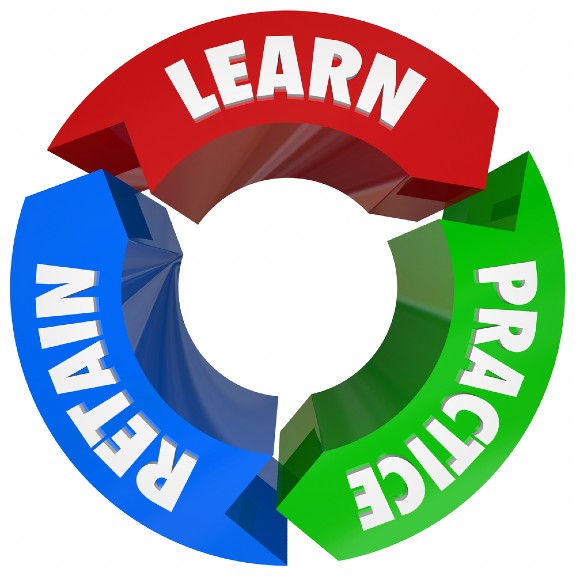In today’s fast-paced, digitally-driven business environment, ensuring employee compliance is more than a regulatory obligation—it’s a cornerstone of risk mitigation and corporate responsibility. As organizations strive to make training more engaging and effective, a growing number are turning to Gamification in Compliance Training Software as a strategic alternative to traditional compliance methods.
This shift marks a significant evolution in how learning and development (L&D) teams approach compliance, and it raises important questions: Which method is more effective? Which is more scalable? And how do you measure ROI?

This blog post dives deep into the comparison between gamified compliance software and conventional compliance programs.
What Is Gamification in Compliance Training Software?
Gamification in Compliance Training Software involves integrating game-based elements like points, badges, leaderboards, and challenges into compliance-focused learning modules. The goal is to transform what is often perceived as tedious and mandatory training into an interactive and motivational experience.
By tapping into psychological triggers such as competition, achievement, and reward, gamified compliance software enhances employee engagement and boosts knowledge retention. This approach has gained traction across industries—especially in sectors with high regulatory burdens like finance, healthcare, and manufacturing.
Gamified platforms often include features such as:
- Real-time progress tracking: Learners can see their advancement through modules, fostering a sense of accomplishment and motivation to continue.
- Scenario-based simulations: Interactive situations mimic real-world compliance dilemmas, helping employees apply their knowledge in a safe, risk-free environment.
- Reward systems for task completion: Points, badges, or virtual incentives reinforce positive behavior and provide tangible goals.
- Performance dashboards for admins: Supervisors and compliance officers can track participation, scores, completion rates, and knowledge gaps, enabling targeted interventions and better audit preparation.
Traditional Compliance Programs: An Overview
Traditional compliance training programs have long been the cornerstone of regulatory education in corporate environments. These programs are typically structured around conventional formats such as instructor-led workshops, printed handbooks or policy manuals, webinar sessions, and static slide-based eLearning modules.
The instructional approach is often linear—employees are expected to absorb large volumes of information in sequential order, usually ending with a basic assessment or acknowledgment form.
The primary focus of these programs tends to be the delivery of required information rather than ensuring that learners are engaged, motivated, or prepared to apply the knowledge in real-world contexts.

This leads to several inherent limitations that impact both the effectiveness and efficiency of traditional compliance training:
- Low Engagement: One of the most pressing issues with traditional compliance training is that it is perceived by employees as a compulsory, box-ticking exercise. The content is often presented in a dry, didactic manner, which fails to spark curiosity or interaction.
- Limited Retention: Because the training is typically passive—relying on lectures, slide presentations, or lengthy reading materials—employees may quickly forget the content after completion.
- Resource Intensive: Traditional methods place a heavy burden on HR and Learning & Development (L&D) teams. Coordinating instructor-led sessions, printing and distributing materials, managing attendance, and tracking completions manually are all time-consuming and labor-intensive processes.
- Scalability Issues: Scaling traditional compliance training is difficult and expensive. In-person workshops require physical space, facilitators, and coordinated schedules—all of which become more complex as the number of employees grows or becomes more geographically dispersed.
Despite these drawbacks, traditional compliance programs are still widely used, especially in organizations that are resistant to digital transformation.
Key Differences: Gamification vs. Traditional Methods
1. Engagement and Motivation
Gamification in Compliance Training Software introduces interactive elements like points, badges, leaderboards, and achievement levels, turning compliance training into an engaging experience. These elements stimulate motivation by appealing to intrinsic drives such as competition, progress, and recognition. In contrast, traditional compliance programs typically lack interaction, leading employees to view training as a box-ticking exercise with minimal personal relevance.
2. Knowledge Retention
Gamified platforms improve knowledge retention by incorporating scenario-based exercises, quizzes, and repetition mechanisms. Learners actively apply what they’ve learned, which strengthens recall and real-world decision-making. Traditional methods often consist of one-off presentations or static content that are quickly forgotten due to passive engagement and lack of reinforcement.
3. Personalization and Adaptability
Gamification in Compliance Training Software offers personalized learning paths based on user performance and learning styles. Adaptive learning algorithms can modify content difficulty in real-time. Traditional methods lack this flexibility, often applying a one-size-fits-all approach.
4. Data and Analytics
Gamified compliance training platforms can adjust content based on learner behavior, skill level, and progress. This adaptability ensures each employee receives training that is appropriate for their role and learning style. Traditional programs are uniform and rigid, providing the same experience to all employees regardless of their background or proficiency, which can disengage advanced learners and overwhelm beginners.

5. Cost and Scalability
While the upfront investment for gamified training software can be higher, it delivers stronger ROI through automation, scalability, and improved learning outcomes. It can be deployed across multiple teams or locations with ease, reducing the need for in-person sessions and printed materials. Traditional methods, on the other hand, become increasingly costly and difficult to scale, especially in global or fast-growing organizations.
Role of Corporate LMS Systems in Gamification
The rise of corporate LMS systems has paved the way for widespread adoption of gamified compliance training. These systems consolidate training content, track learner performance, and facilitate continuous education. Modern LMS platforms often come with built-in gamification features or support for third-party gamification plugins.
In particular, Corporate LMS for Compliance offers a robust infrastructure to automate tracking, deliver timely updates, and ensure audit readiness—all while keeping learners engaged through game mechanics.
Key LMS Features That Support Gamified Compliance:
- Automated Certificate Issuance: Automatically awards completion badges or credentials to learners.
- Role-Specific Learning Paths: Customizes training based on job role or function.
- Mobile Access: Allows on-the-go learning via phones or tablets.
- Multi-Language Support: Ensures consistency across global teams.
- Real-Time Dashboards: Tracks learner progress and highlights knowledge gaps.
Common Challenges in Gamified Compliance Training
While Gamification in Compliance Training Software offers clear advantages in engagement, knowledge retention, and scalability, it is not without its pitfalls. Organizations seeking to implement gamified compliance programs must be mindful of several common challenges and take a strategic approach to mitigate them.
Over-Gamification:
One of the most frequent missteps is overloading a training program with too many game mechanics—badges, levels, timers, points, leaderboards, avatars, and more—without a clear pedagogical purpose. When gamification becomes excessive or gimmicky, it risks undermining the learning experience. Instead of reinforcing content, these elements can become distractions that shift focus away from compliance objectives.
The solution: Gamification should be applied thoughtfully and in alignment with the program’s core learning goals. Each game element must serve a purpose—whether it’s reinforcing behavior, motivating repetition, or improving knowledge recall.
Cultural Resistance:
In more traditional or risk-averse industries—such as finance, law, and government—there may be resistance to gamification. Decision-makers or employees may perceive game mechanics as inappropriate or too informal for serious compliance topics, especially those dealing with legal, safety, or regulatory issues.
The solution: To overcome cultural resistance, it’s essential to communicate the value of gamification as a strategic learning tool, not a game for amusement. Share case studies, success metrics, and employee feedback that demonstrate how gamification can improve compliance outcomes and reinforce behavior without diminishing professionalism.
Technical Integration:
Legacy systems—especially outdated learning management systems or custom-built platforms—often lack support for gamification. They may not be compatible with third-party gamification tools or lack the flexibility to accommodate modern features like real-time feedback, scenario branching, or badge assignment.
The solution: Organizations should evaluate their existing LMS infrastructure and consider transitioning to scalable, modular platforms that can grow with their needs. The best LMS for small business or large enterprises alike should support API integrations, plugin ecosystems, and mobile-friendly delivery to ensure a seamless gamified experience.
Best LMS for Small Business: How They Leverage Gamification
Small and mid-sized businesses are increasingly recognizing the strategic value of modern learning tools, especially as regulatory demands grow and remote work becomes more prevalent. For these organizations, adopting the best LMS for small business can be a game-changer—offering robust compliance capabilities and gamified learning experiences without requiring enterprise-level budgets or technical resources.
Benefits for small businesses include:
Reduced compliance risk
Small businesses are not exempt from regulatory obligations. In fact, they can be more vulnerable to fines or reputational damage due to limited internal resources. A gamified LMS makes compliance training more engaging and memorable, reducing the likelihood of errors or oversights.
Faster onboarding
New hires often struggle to absorb policies and protocols quickly, especially in fast-paced environments. Gamified learning modules break down complex compliance material into interactive and digestible segments, accelerating the onboarding process and improving retention.

Improved training consistency
Without a centralized LMS, training can become ad hoc or inconsistent, varying by department or manager. With a structured platform, small businesses can deliver standardized content across the organization—ensuring every employee receives the same high-quality, compliance-aligned education.
Mobile and Remote Learning Capabilities
The best LMS for small business platforms are designed for flexibility. Mobile compatibility ensures employees can complete training on the go—whether they’re in the office, on a job site, or working remotely. This adaptability improves completion rates and accommodates different working styles.
Empowered Internal Teams
Thanks to intuitive course creation tools, even lean HR teams can build and manage gamified training programs. Visual editors, content libraries, and gamification widgets empower teams to update courses quickly and scale learning as the business grows.
Compliance and Engagement Metrics That Matter
To measure the effectiveness of gamified vs. traditional compliance training, organizations should track metrics such as:
- Completion Rates
- Knowledge Retention Scores
- Engagement Duration
- Feedback Ratings
- Post-training Behavior Changes
Gamified platforms typically outperform traditional methods across all these indicators.
Future Trends: The Evolution of Gamified Compliance
The next wave of Gamification in Compliance Training Software will likely integrate advanced technologies such as:
- AI and Machine Learning: For adaptive learning paths
- Augmented Reality (AR): For immersive compliance simulations
- Natural Language Processing (NLP): For real-time learner feedback
These innovations will further close the gap between learner expectations and corporate compliance mandates.
Final Verdict: Which One Wins?
When comparing Gamification in Compliance Training Software and traditional compliance programs, the advantages of the former are clear. With greater engagement, better retention, and real-time analytics, gamified compliance software offers a future-ready solution for today’s evolving workplace. While traditional methods may still serve certain scenarios, they are rapidly being outpaced by digital, data-driven, and gamified alternatives.
Organizations that embrace gamification within corporate LMS systems are better positioned to meet compliance requirements while fostering a culture of continuous learning and employee empowerment.
Conclusion
Incorporating Gamification in Compliance Training Software is no longer a luxury—it’s a strategic necessity for organizations looking to enhance regulatory adherence, employee engagement, and training ROI. From global enterprises to those seeking the best LMS for small business, gamified learning tools are reshaping the compliance landscape. Whether you are adopting a Corporate LMS for Compliance or upgrading an existing platform, the evidence is clear: gamification works, and it’s here to stay.